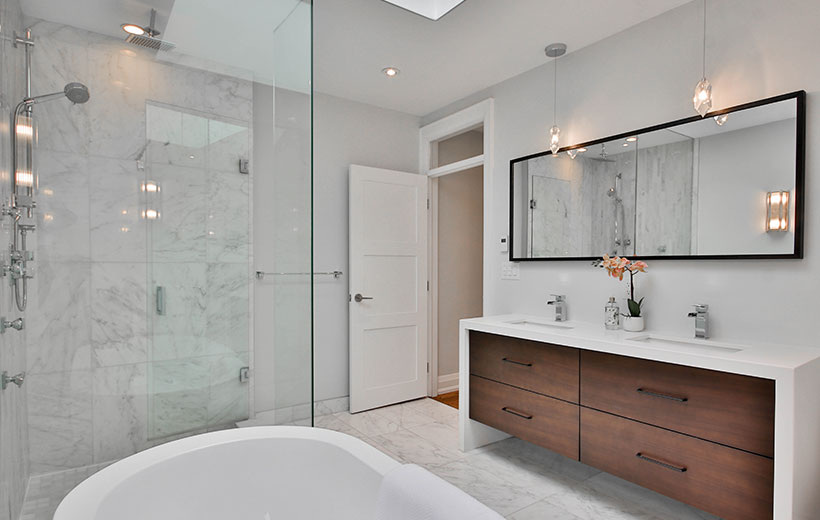Bathrooms are unique spaces that require a paint finish that can withstand moisture, humidity, and frequent cleaning. The wrong choice can lead to peeling, mildew growth, and an overall unsightly appearance.
If you want to ensure a durable and aesthetically pleasing result, consider the following factors when selecting paint for your bathroom.
1. Moisture Resistance:
Bathrooms are exposed to high levels of moisture and humidity, making it essential to choose a paint that can withstand these conditions. Opt for a paint labeled as moisture-resistant or specifically designed for bathrooms. These paints typically have a higher level of acrylic, which helps prevent moisture absorption and minimizes the risk of mold and mildew growth.
2. Paint Finish:
The finish of the paint is equally important, as it affects both the aesthetics and functionality of the bathroom. Semi-gloss and satin finishes are popular choices for bathrooms due to their durability and ease of cleaning. These finishes are resistant to moisture and can be wiped down without damaging the paint. Matte finishes, while trendy, may not be the best choice for bathrooms as they can trap moisture and are more challenging to clean.
3. Mildew-Resistant Formulas:
To combat the growth of mildew and mold, consider using a paint with a mildew-resistant formula. These paints contain antimicrobial agents that help prevent the development of fungi, making them ideal for high-moisture areas like bathrooms. Ensure that the paint you choose explicitly mentions mildew resistance on the label.
4. Quality of the Paint:
Investing in high-quality paint is essential for achieving a long-lasting and attractive finish in your bathroom. Cheap paints may lack the durability and moisture resistance needed for a space prone to humidity. Look for reputable brands known for their quality and consider premium lines that offer enhanced features such as mold resistance and washability.
5. Color Choice:
While the functional aspects of bathroom paint are crucial, don’t forget about the aesthetic appeal. Consider the overall design and color scheme of your bathroom when choosing paint. Light colors can make a small bathroom feel larger and more inviting, while darker tones can create a cozy and sophisticated atmosphere. Additionally, light colors are better at hiding water stains and soap scum.
6. Ventilation:
Proper ventilation is essential for maintaining a healthy bathroom environment and preserving the quality of your paint job. Ensure that your bathroom has an exhaust fan or windows that can be opened to reduce humidity levels. Good ventilation helps prevent paint from peeling and inhibits the growth of mold and mildew.
7. Test Samples:
Before committing to a full paint job, test samples of your chosen colors in the bathroom. Observing how the paint looks in different lighting conditions and against various bathroom fixtures can help you make an informed decision. It’s also an opportunity to assess how well the paint adheres to the walls and whether it meets your expectations for both appearance and functionality.
8. Application Techniques:
Proper application is key to the longevity of your bathroom paint. Follow the manufacturer’s instructions regarding preparation, priming, and application. Use high-quality brushes and rollers to ensure a smooth and even finish. Taking the time to apply the paint correctly will contribute to its durability and resistance to moisture.
In conclusion, selecting the right paint for your bathroom involves considering a combination of factors, including moisture resistance, paint finish, mildew resistance, paint quality, color choice, ventilation, and testing samples. By carefully evaluating these elements, you can achieve a bathroom paint job that not only looks appealing but also stands up to the challenges of this unique environment.
Our team can help you choose the right paint on any type of house painting in Brentwood or beyond.



